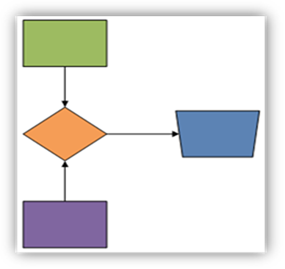
CATEGORIES:
BiologyChemistryConstructionCultureEcologyEconomyElectronicsFinanceGeographyHistoryInformaticsLawMathematicsMechanicsMedicineOtherPedagogyPhilosophyPhysicsPolicyPsychologySociologySportTourism
Algorithms are used for calculation, data processing, and many other fields.
What is the Turing machine? It is hypothetical computing device proposed by Alan M. Turing; it is not actually a machine, it is an idealized mathematical model that reduces the logical structure of any computing device to its essentials.
It consists of an infinitely extensible tape, a tape headthat is capable of performing various operations on the tape, and a modifiable control mechanism in the head that can store instructions. As envisaged by Turing, it performs its functions in a sequence of discrete steps. His extrapolation of the essential features of information processing was instrumental in the development of modern digital computers, which share his basic scheme of: • an input/output device (tape and tape reader), • central processing unit (CPU, or control mechanism), • and stored memory.
Alan Turing visualized a "state machine" that was capable of basic computing. He never actually built his Turing Machine but people have paid homage to him by creating modern examples of the machine that he imagined. A state machine is a device which is controlled by the "current state" and a set of instructions which determines the "next state". In other words, a prototype for the computers of today. Algorithms can be expressed in many kinds of notation, including natural languages, pseudocode, flowcharts, and programming languages. Natural language expressions of algorithms tend to be verbose and ambiguous, and are rarely used for complex or technical algorithms. Pseudocode and flowcharts are structured ways to express algorithms that avoid many of the ambiguities common in natural language statements, while remaining independent of a particular implementation language.
Date: 2015-12-17; view: 772
|

 Stop
Stop







 Pseudocode is a computing notation resembling a simplified programming language, used in program design. Flow chartis a graphical representation of a computer program in relation to its sequence of functions (as distinct from the data it processes).
Pseudocode is a computing notation resembling a simplified programming language, used in program design. Flow chartis a graphical representation of a computer program in relation to its sequence of functions (as distinct from the data it processes).